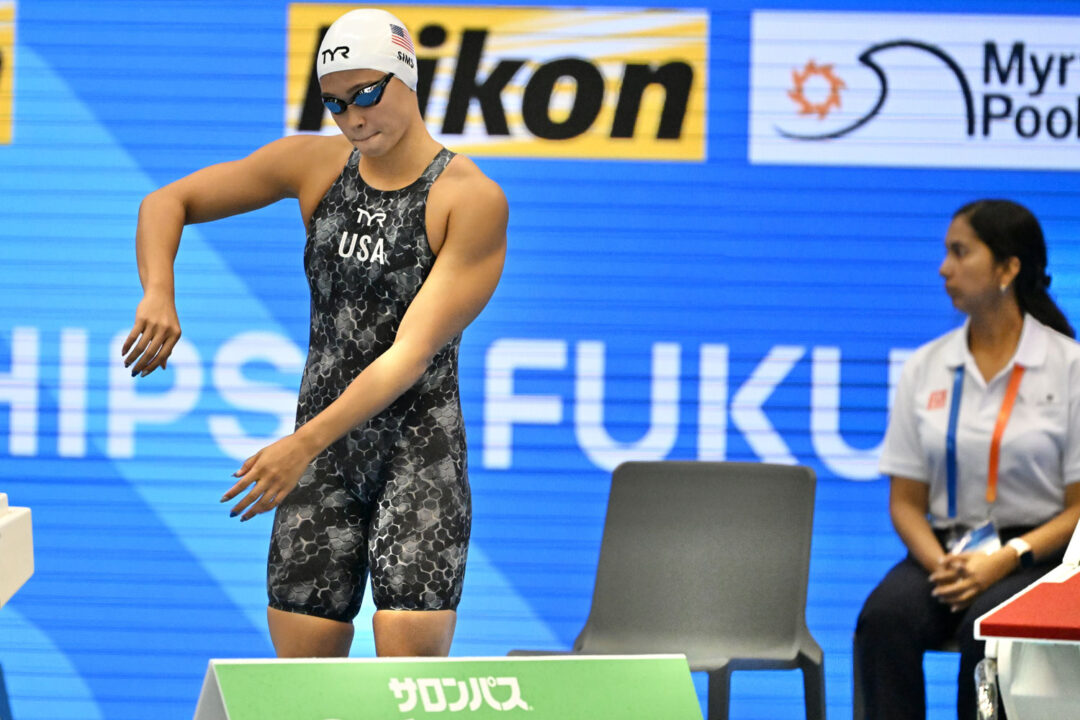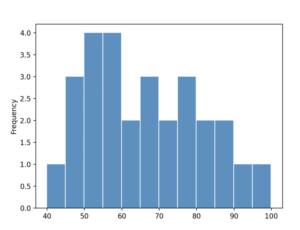2024 U.S. Olympic Trials
- June 15-23, 2024
- Lucas Oil Stadium – Indianapolis, IN
- LCM (50 meters)
- Meet Central
- Broadcast Info
- SwimSwam’s Definitive Guide to Trials
- Psych Sheets
- Live Results
- SwimSwam Preview Index
Barry Revzin contributed to this report.
There are (roughly) two hours until the start of the 2024 U.S. Olympic Trials. In the absence of results to analyze (soon!), let’s dig into the data we do have available to us: the entry lists. Grab your morning coffee and get ready to nerd out.
Age Distribution
First, something simple. Unsurprisingly, the bulk of entries come from college-aged swimmers. We’re defining those as 18-23 year-old athletes; or if you want to feel old, those who were born between 2001-2006.
A combination of gap years, redshirts, and Covid fifth-years means the demographic is not precisely captured by this metric, but it’s a good enough estimate and the results make the most sense.
By the numbers, the average athlete age is 21 years old. The averages are pretty similar broken down by gender as well: the average age for women is 20.6, and men is 21.3.
Your eye may be drawn to the left side of the graph for our most extreme outlier: Gabrielle Rose, 46, is the oldest swimmer entered in this meet. Born on November 1, 1977, the two-time Olympian is seeded 27th in the 100 breast and 46th in the 200 breast.
On the opposite end of the spectrum, Gabi Brito is the youngest qualifier at just 13 years old. She is seeded 39th in the 50 free.
Events Entered
Next, let’s take a look at how many events athletes are entered in. The data shows a decreasing trend, which again makes sense. Trials is the meet to aim for, and the qualifying standards are steep as a result. If you’re not an active National Teamer, you’re likely going to be putting all your eggs into your best event to book your ticket.
For the top athletes, it seems most are entered in at least two events. Even athletes who are single stroke specialists are likely to be in both the 100 and 200 of their best event.
Scanning through the psych sheet, there appear to be only two athletes ranked within the top 10 of their sole entry. Coincidentally enough, they’re both 100 breaststrokers: McKenzie Siroky is seeded 10th in the women’s event and Mitch Mason is 7th in the men’s.
Whether athletes actually compete in all their entered events remains to be seen, most dramatically in the case of Bella Sims who is the sole swimmer entered in 11 events. For reference, that’s only three short of the entire event slate. Sims is missing the 50 free, 100 breast, and 200 breast.
Number of Entrants Per Event
Finally, let’s look at the number of entrants in a given event.
On average, there are 66.1 entries per event. There’s a bit of a disparity between genders: 73.2 per men’s event and 59.0 per women’s. However, this checks out with what we know about the overall meet entries: male swimmers outnumber female swimmers (x to y).
USA Swimming’s one lever of controlling meet size is setting the time standards. For this quad, the organization announced that the algorithm used to set the standards was aiming for 80 to 90 qualifiers per event. While other goals were met, namely the total size of the meet, it seems a little more fine-tuning is needed to even out qualifiers.
On paper, the six events with the lowest number of entrants are all women’s events: the 400 free, 200 IM, 800 free, 200 breast, 400 IM, and 1500 free (in order). At the other end of the spectrum, the top four are all men’s events: the 200 IM, 400 IM, 50 free, and 100 breast (also in order).
Still, that doesn’t tell the whole story, as we already established there are more male qualifiers than female qualifiers. To compensate, we can normalize by average entrants by gender to get a comparable “popularity” score. With this metric, the women’s 50 free jumps to the top of the list, followed by the women’s 100 breast, and finally the men’s 200 IM.
The women’s mile remains the least entered event of the meet, while right above it is the men’s mile.
Interestingly, the men’s 400 IM remains in the top five. This could indicate that the cut was relatively soft, though with 91 entrants it’s just over target for USA Swimming’s goals.
Event Pairings, Rare and Overdone
We’ve talked a lot about event entries, but what about overlapping entries? This chart highlights common event “pairings”. The higher the number, the more athletes are entered in both events.
The most common event pairing is the 800 free and 1500 free. It’s worth noting that this double was not a possibility pre-2020, as Tokyo was the debut of the men’s 800 and women’s 1500. Now distance swimmers have more options, and they have taken full advantage.
The second most common pairing is on the other end of the spectrum: the 50 and 100 free.
But let’s dig into some more interesting pairings, as swimming the same stroke over multiple distances isn’t that unexpected.
For instance, the 100 free and 200 free is relatively uncommon, especially in comparison to other ends of the freestyle spectrum. It’s practically equivalent to the number of athletes who will swim up to the 400, implying the 200 distance is truly where sprint and middle distance swimmers converge.
Another surprisingly uncommon double is the 100 back and 100 fly. We often see athletes take on the stroke double in the NCAA format, but perhaps with fewer walls and more continuous swimming, the need to specialize is more apparent.
While we can’t expect to see all these pairings come to fruition over the course of the meet – once again, shout out to Bella Sims for helping to fill in a lot of these squares – but it’s an interesting peek into athlete versatility.
The Most Average Swimmer at the 2024 U.S. Olympic Trials
DISCLAIMER: This is just for fun.
Working through this data made a question pop into my head: looking at all of this data, what is the most common swimmer competing at Trials? The answer shouldn’t be too surprising.
The average Trials competitor is a 21 year-old male entered only in the 200 IM. If this hypothetical athlete has another cut, it’s most likely to be in the 400 IM, but maybe he’s a little tired and just wants to sprint four laps.
Happy Trials!





This is a great article. I have a question that I haven’t been able to fund the answer to. I understand that the way a swimmer gets into the trials is to meet the qualifying time. Got that. But, why are there so many entrants (and, hence, heats) in every event, when the end goal is to find the fastest 2-6 swimmers in each event. This IS the “U.S. OLYMPIC Trials,” not a typical swim meet. While a single heat wouldn’t make statistical sense, wouldn’t 2 or 3 heats provide roughly the same results? With the indirect result being a significantly less-costly and -lengthy meet. (BTW, I am a competitive swimmer from way back…AAU days…and I’ve also coached and officiated,… Read more »
This is awesome. Do more of these